The Great Communicator
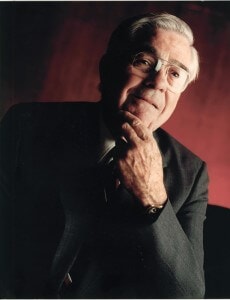 John W. Jacobs Jr. was well into his late 80s when he bought his first iPhone.
John W. Jacobs Jr. was well into his late 80s when he bought his first iPhone.
Although plenty of stories exist about grandkids’ having to show him how the thing worked, the operative part of the scenario is that Jacobs deliberately acquired the iPhone on his own. And, at a trustees meeting a month or so before his death, just shy of his 89th birthday in November 2011, Jacobs had out his new device. He proudly showed off – as if it were digital pictures of the aforementioned grandkids – the “new apps” for personal communications devices that had been developed for the radio stations and AccessNorthGeorgia.com, the Web-based news service, that are part of the Jacobs Media enterprise he founded in Gainesville, Ga.
“Mr. Jacobs always looked for the next big thing in communications,” says Jones P. Andrews, who attended Brenau as a broadcast journalism major for two years before eventually working for Jacobs Media in various capacities for more than 20 years. “He was not hesitant about embracing new technology – not because it was a novelty or cool, but because he knew instinctively that technology always has been, and always will be, the key element in any communications enterprise.”
Although Jacobs Media has been for more than two decades under direction of the current president, Jacobs’ son, John Wesley (Jay) Jacobs III, there is no question that the elder Jacobs’ influence in its development and strategic direction remained in force. Jay Jacobs says his role has been to follow his father’s vision and carry the company forward “to the next logical level.” The company’s radio stations always remained the centerpiece, but John Jacobs fully supported his son’s move to build the collaborative AccessNorthGeorgia.com Internet news service and, more recently, to develop those smart phone apps.
“My father was always open to try or open something new,” Jay Jacobs says. “He was open to anything that would help communicate better with more people.”
John Jacobs completed a journalism degree at one of the best journalism schools in the country, the University of Missouri, following his return from World War II. He styled himself as “a promoter” in his successful business career. Actually, he temporarily used “They Call Me Promoter” as a working title to his autobiography. Although he definitely scored some high marks in the promotions area, he was at his core a communicator. His principal product was moving ideas and information. As for the “promoter” part, following military service, Jacobs eschewed a career in advertising in New York to work in his hometown. As a boy in Gainesville he had started a newspaper that chronicled the comings and goings in his neighborhood along Boulevard, which ran then – as it does now – through the heart of the Brenau campus. What happened after Jacobs returned was “the next logical step.”
Evolutionary Media Pioneer
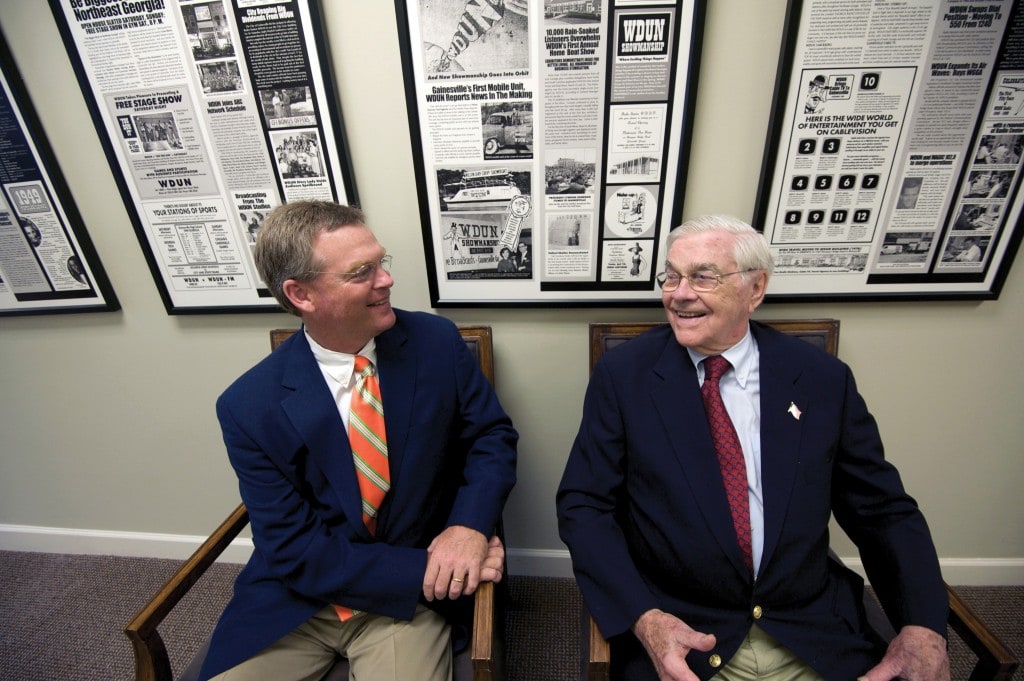
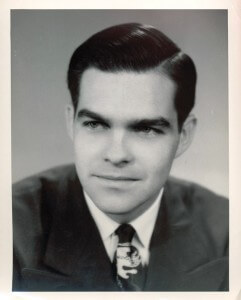 Born at about the same time that commercial radio was taking flight in the United States, the young veteran at his first opportunity in Gainesville jumped into broadcasting – the medium that was leaving the sacrosanct print newspapers in the dust in the race to deliver timely information. First it was AM radio. He expanded radio operations to the better-quality FM band very early – in fact, so early in the world’s adoption of that new technology that Jacobs had to buy his advertisers radios that were capable of receiving FM signals so they could listen to their own commercials on his new FM radio station. Then, he got in on the ground floor of cable television. And, with the advent of a new, less-costly printing technology, Jacobs, for a short time, was back on the streets of his hometown with a local newspaper. Shortly after the internet opened for commercial use, Jacobs Media stepped into the fray to leverage that technology in its broadcasting enterprise. The result was AccessNorthGeorgia.com, a web-based combination of media types that, in fact, broadcasts the Gainesville enterprises offerings to the entire world. And, as digital technology evolved more, John Jacobs closely watched to see his company move into “narrowcasting” with its smart phone applications. Now, when John Jacobs’ wife, Martha, goes for a walk, she can listen to WDUN-AM as it streams live over the Internet on her cell phone.
Born at about the same time that commercial radio was taking flight in the United States, the young veteran at his first opportunity in Gainesville jumped into broadcasting – the medium that was leaving the sacrosanct print newspapers in the dust in the race to deliver timely information. First it was AM radio. He expanded radio operations to the better-quality FM band very early – in fact, so early in the world’s adoption of that new technology that Jacobs had to buy his advertisers radios that were capable of receiving FM signals so they could listen to their own commercials on his new FM radio station. Then, he got in on the ground floor of cable television. And, with the advent of a new, less-costly printing technology, Jacobs, for a short time, was back on the streets of his hometown with a local newspaper. Shortly after the internet opened for commercial use, Jacobs Media stepped into the fray to leverage that technology in its broadcasting enterprise. The result was AccessNorthGeorgia.com, a web-based combination of media types that, in fact, broadcasts the Gainesville enterprises offerings to the entire world. And, as digital technology evolved more, John Jacobs closely watched to see his company move into “narrowcasting” with its smart phone applications. Now, when John Jacobs’ wife, Martha, goes for a walk, she can listen to WDUN-AM as it streams live over the Internet on her cell phone.
Jacobs knew the
changing and
challenging media
landscape requires
broader skills.
Most radio and television stations, as well as newspapers and other media, initially treated Web sites as mere marketing and promotion tools. Jacobs saw very early that the Web and the Internet were integral to the evolution of 21st century media, and he definitely encouraged the company he founded to adapt to the new formats, says Jay Jacobs. As a result of the initiative, AccessNorthGeorgia.com, moved beyond being a Web page for a radio station. It became quickly, and remains today, a news service, a multimedia portal that comprises print, audio and video media in telling stories and delivering the news to the community.
If “peer review” is an accurate measure, as it often is in academia, then the Jacobs legacy as a model to teach students how to do things well stands up to the test. In 2012, Jacobs Media landed a pocketful of Georgia Associated Press Broadcasters Association awards for both its broadcasting and Web components.
As the media evolved over the last seven or eight decades, John Jacobs also paid attention to education related to preparing people to work in media and communications careers. Jacobs pointed out in his autobiography, which actually was titled The Longer You Live, that in 1922 Brenau College, as it was known in those days, acquired the first broadcast license in Hall County – the same year that the first commercial radio station was licensed in the United States.
Although the early Brenau station foundered, in 1976, Jacobs – by then chair of the Brenau Board of Trustees and en route to becoming the university’s longest serving trustee – spearheaded the initiative to re-license and relaunch the Brenau station as WBCX-FM, 89.1 on the dial. Moreover, thanks to the partnership he established between the Brenau station and Jacobs Media, the station has remained on the air since.
Before he died, he and his wife, Martha, along with their son, Jay, and daughter, Elizabeth, had been crafting a legacy gift to Brenau not only to insure that WBCX could continue, but that it would become the nucleus for a new kind of communication education.
Big Footprint
The Federal Communications Commission licenses WBCX-FM as a not-for-profit station. Sanctioned by the Corporation for Public Broadcasting, the station operates totally on revenue provided by the university, CPB and other approved sources. For example, the station could have pledge drives, like other public broadcasting entities in the region, but it never has. It could solicit and receive sponsorships for commercial enterprises and acknowledge those contributions
on the air – but it cannot sell straight advertising “commercial” time.
Unlike the signals of many other low bandwidth “college” radio stations, WBCX’s range in northeast Georgia covers an area with a radius of about 35 miles. It can be heard in the mountains as well as close to the I-285 corridor north of Atlanta and along the Georgia 400 corridor to the Johns Creek-Alpharetta suburbs – an area with an enviable demographic profile for a broadcast audience. That could not have happened without the Jacobs partnership.
Since the WBCX reincarnation, Jacobs Media has supported the station by allowing its broadcast antenna to be mounted on the Jacobs Media broadcast tower, located at one of the high points in the Gainesville area. The WBCX signal originates from the station in the basement of the Jacobs building on the Brenau campus, which has visible satellite dishes mounted on the roof to collect daily signals for the British Broadcasting Corporation’s highly regarded news broadcast. The actual WBCX signal, originally analog but now digital, travels over high-speed telephone lines for instantaneous broadcast from the Jacobs media tower. The conversion from analog to digital also enables transmitting the WBCX signal over the Internet, which means that the Brenau radio programs are available through live streaming anywhere in the world. Over the years, Jacobs Media also has provided technical assistance to make sure things remained operational at both ends.
That “technical” arrangement continues indefinitely under terms of the new agreement. The legacy gift also institutionalizes things that have occurred more or less informally over the years. For example, Jacobs Media personnel will be available to teach Brenau students on an adjunct basis in university academic programs, bringing their up-to-date expertise in broadcasting and news reporting into the classroom. Brenau students will also have continued access to internships and part-time work at Jacobs Media, but the work, to give students some practical experience before they graduate, will be tied more closely to academic learning outcome goals and curriculum.
“The qualities of the students and the participants in internships have been outstanding over the years,” says Jay Jacobs. He ought to know. His wife, Anna Alexander Jacobs, WC ‘86, was one of them. She currently plays a key role in the management of Jacobs Media.
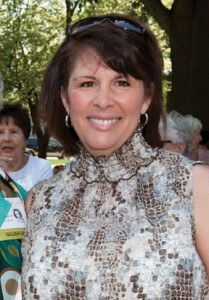
“Dad was always asking, ‘How can we get more Brenau people involved?’” Jay continues. “One way is that we want to expand beyond the Women’s College and attract students from other Brenau academic programs, even online students. We want to give Brenau students a real-world experience while they are in school so that, when they get out of school, they will be ahead of the game.”
The John Jacobs legacy gift includes some more expansive provisions. It provides for establishment of a special panel, comprising Jacobs Media personnel and university academics, specifically charged with the continual review of existing curriculum and generation of new academic programs and classes that are up to date and relative to the marketplace. It is what Jay Jacobs referred to as “adaptive curriculum,” practical learning for students preparing for careers in the media, especially in the digital media world. More than merely providing a microphone in a studio for students to “talk on the radio,” that means teaching students everything it takes to function in a digital media environment, from turning dials, stringing cables and running audio and video recording devices, to editing audio and video recordings, to writing and producing news and other content, to, yes, talking on the radio.
More precisely defined terms of the Jacobs legacy include application of the proceeds of an irrevocable charitable remainder trust, established by Jacobs and his heirs prior to his death, which would provide funds for the creation of a new Department of Electronic Media and Contemporary Journalism at Brenau. That department would be under the leadership of a named professorship with the charter for both ongoing research and academic program in the evolving broadcast journalism and interactive multimedia world.
Interactive Media
Although there are many mind-numbing and technologically esoteric definitions of interactive media, it’s really a very simple concept: take all the various media – newspapers, magazines, radio, television, the World Wide Web, video, audio, e-mail, “snail mail”, and so on – and throw them into a digital melting pot. Stir it rapidly with the knowledge that, no matter what comes out of the pot in any form via any device, it is subject to immediate action by members of the audience, collectively and individually. Heck, it is even subject to preemptive action.
Since Jacobs Media was one of the pioneers of interactive media at the local level around the nucleus of a radio station, the John Jacobs legacy intends to insure that WBCX remains the “learning laboratory” for students. However, to make it more relevant to real-world experience, Jacobs nudged the university to structure its operations parallel with its commercial cousins.
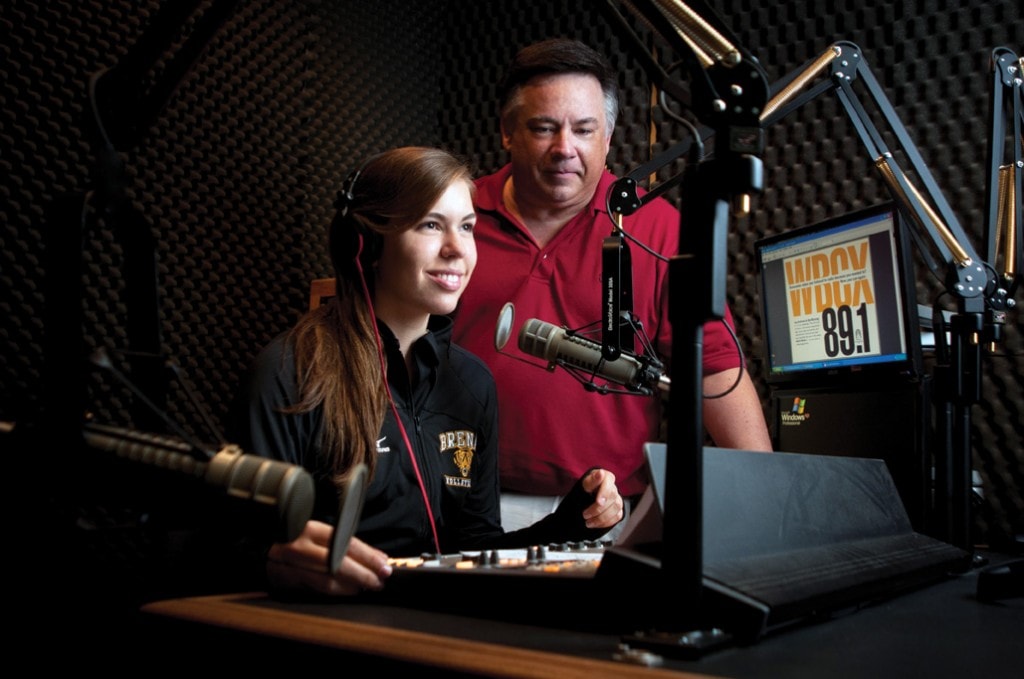
Consequently, at the beginning of 2012, the university relocated responsibilities for day-to-day operation of the station from the academic side of the house in the College of Business & Mass Communication to the university’s administrative Office of Communications & Publications. To that end, the university in January employed an experienced general manager for the station and a director of interactive media development – none other than Jones P. Andrews.
When Andrews was a student at Brenau in the late 1970s, WBCX physically roosted in the near rafters of the third floor in the Pearce Auditorium complex. Andrews, whose wife, Gigi Babinec Andrews, WC ’80, was also a broadcast journalism major, was the first student station manager. That experience gave him a taste of radio on both sides of the microphone. When he returned to WBCX in January 2012, he began laying plans to get back on the air as “Jay Andrews,” his radio on-air persona, reviving a popular morning show. The show launched Sept. 4.
Andrews’ charge goes beyond running the 24-7 broadcasting operation. He has also undertaken responsibility to direct development of a multimedia platform, with WBCX at the heart, similar to the AccessNorthGeorgia.com portal with which he was involved at Jacobs Media. He will also look for ways to keep the Brenau communications enterprise at the forefront by working to invigorate the university’s nascent television and video operations (for production of more multimedia content) and leading development of smart phone apps and anything else that helps Brenau communications leverage and evolve with digital technology.
The central idea of the Jacobs legacy, as members of the family explain it, always was a vision for academics.
“John always aspired,” says Jacobs’ wife, Martha. “That’s what he told me when we first met. Of course, I didn’t understand what he meant at the time, but I soon learned. It was not just improving what was there, but moving ahead to the next improvement, the next level beyond. He was never satisfied with the way things always had been done. He wasn’t afraid to try new things, and if they didn’t work, move on to something else. He changed directions a lot, but it was always to move forward. He never wanted Brenau to fall behind.”
Using “the community
as a classroom”
Elizabeth Jacobs Carswell says her father in the end had a vision that Brenau in the future not only must have a top-notch journalism department, but also should aspire to having the best journalism program in the state. “He wanted to make it possible for the university to use the community as a classroom, the way he had done throughout his career,” she says. “He would listen, watch trends, and sort it out. He always said there was so much to learn, but he never stopped learning. He was never afraid of an answer – or of a question. He was interested in what happens next.”
“I think Daddy saw the future” she says, “but he was not afraid of the future. He knew that, whether you are a business or a university, you always have to look down the road.”
No one pretends that journalism, broadcasting or communications education at Brenau begins with the Jacobs legacy. Nor do we overlook the fact that many Brenau alums through generations have found significant places in communications-related fields. (Brenau Window has launched a catalog of mini-profiles of some of them in the online version of the magazine at https://window.brenau.edu/communicators.) Although the plan for building new and broader academic program is, as the commentators on television news broadcasts might say, “a developing story,” the Jacobs legacy provides the foundation for what comes next.
For John Jacobs, it seemed that the emergence of interactive media became a sort of physical and intellectual manifestation of his philosophy and his life. As Elizabeth Carswell explained it, “His career was in journalism, but it was all about relationships.” For example, what else is Facebook if not a nexus of journalism and relationships?
Indeed, when he died, John and Martha Jacobs had just completed a course in social media through the Brenau University Learning and Leisure Institute, and John had started his own Facebook page.
About a year before Jacobs’ death, one of Carswell’s four children, Mary London, a journalism major at Samford University, showed her granddad one of her textbooks, which was all about social media and the place outlets like Facebook, Twitter and YouTube hold in global communication. He immediately waded in, and a lot of what he saw in the book activated his imagination. If what he saw represented cutting-edge stuff in American journalism and digital communications, he wanted to make sure that Brenau was teaching it, too.
“I knew that we were already doing a lot of those teaching methods at Brenau,” Anna Jacobs says. “Mass communication professor Juli Clay is very out front, judging from what I have seen in her classrooms at Brenau and in interacting with her students. To the extent that it could be better, John wanted to be the inspiration. For him, the principals and practices that were important when he got out of journalism school in the 1940s triply are important today, but it is the methods for delivering the news that are changing. He did not want to see Brenau overlook any of that in its multimedia programs.”
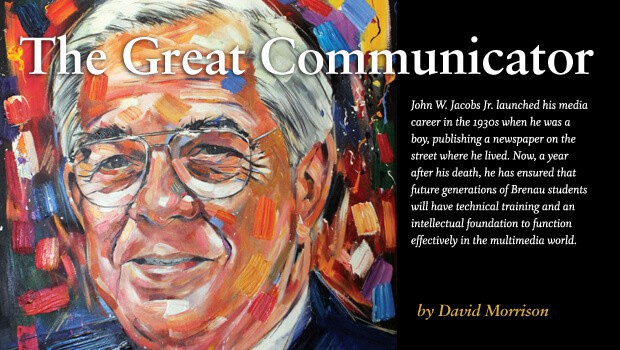

This online/interactive version of Brenau Window is a marked improvement over the Brenau Window traditional PDF presence on the web. Moreover, in the spirit John Jacobs this new format not only promotes more dynamic communication but also strengthens potential relationships between Brenau and its ever faithful alum.
Grace, you make a wonderful point! This new version is certainly something John Jacobs would be proud to see. Thanks for the feedback, and please share this site with your fellow alumni. — Jenny Dell, Brenau Alumni Relations